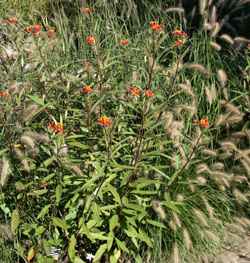
With numerous common names including tropical milkweed, bloodflower, scarlet milkweed, sunset flower and silkweed, Asclepias curassavica is an interesting member of the milkweed family (Asclepiadaceae) thought to be native to the Caribbean, South America, Central America or Mexico. It is now found worldwide in the tropics. Although it exact origin is unknown, its species name reflects the place where the first specimens were likely collected, Curaçao, in the southern Caribbean.
It is hardy in zones 8b -11, remains evergreen to zone 9b, and is often grown as a frost-tender annual in temperate areas. In tropical and subtropical regions it can be a weed in pastures, fields, along roadsides and in disturbed areas.
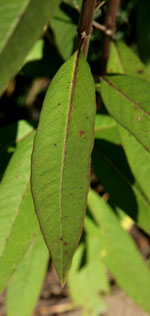
This erect, evergreen perennial subshrub has opposite leaves and milky sap like most plants in the milkweed family (the sap is a skin irritant and the plant is poisonous if ingested). The plants grow 3-4 feet tall, with simple or branched stems. The narrow leaves are 5-6” long and pointed at both ends. They are medium green and sometimes have white midribs.
The showy orange and red flowers are borne in rounded terminal and axillary clusters (umbellate cymes). In addition to the normal calyx (ring of 5 sepals) and corolla (ring of 5 petals) that other plant flowers have, milkweeds also have a corona that looks like an extra set of petals facing toward the center of the flower, like a crown. The pollen aggregates into masses called pollinia.
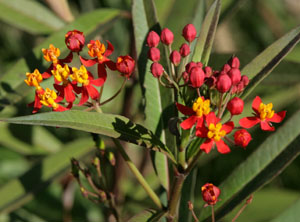
On A. curassavica flowers the corolla is typically red and the corona orange, and this species is unique in having reflexed corolla lobes. The flower clusters are 2-4” across with 6-15 flowers in each group. Plants will bloom at 4 months old or younger. They bloom continuously from spring to fall in temperate climates and in tropical climates may be in flower at any time of the year. The long stems are excellent for cutting and the flowers have a long vaselife.
The flowers are very attractive to butterflies, bees and other insects, as well as hummingbirds. Monarch butterflies use this species as a host plant. The striped caterpillars seem to prefer this species over many of the native species in our area that have tougher leaves. They have a higher survival rate and shorter developmental time on A. curassavica than on common milkweed, A. syriaca.

Following the flowers, spindle-shaped pods 3-4” long are produced. These eventually split open lengthwise to reveal ovate, flat seeds stacked in 2 rows. Each seed has a pappus of fine, white silky hairs on one end. Wind disperses the seeds, which float easily with the attached plumes. The intact pods can be dried to use in ornamental arrangements.
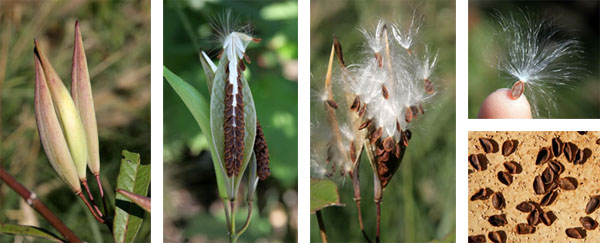
This milkweed is a good addition to perennial borders, cottage gardens, or meadow gardens. Because it has thin stems and an open form it looks best mixed with other tall plants, so its flowers peek out from among the other foliage and flowers.
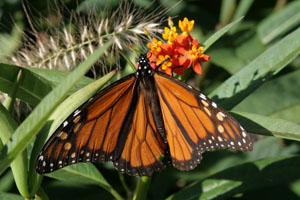
It combines well with other milkweeds, coneflowers (Echinacea purpurea, E. paradoxa, Ratibida pinnata), asters, liatris, many ornamental grasses, and many other plants with informal habits. It is ideal for use in butterfly gardens and adapts well to container culture. Potted plant can brought inside for the winter and treated as houseplants that need bright light.
A. curassavica is quite tolerant of different soil types, growing well in dry, moist and wet soils. This species grows best in full sun. It is somewhat drought tolerant, although it grows best with consistent moisture.

Tropical milkweed can be grown from cuttings, but it is quite easy to start from seeds. Start the seeds indoors 8-10 weeks before last frost to get flowers earlier; plants from seeds sown outdoors may not bloom until late summer or early fall. Seeds should germinate in 2 to 3 weeks at room temperature. Soak seeds in water for 24 hours before planting to improve germination. This species is easily transplanted when young. Because it develops a long tap root, it is more difficult to transplant once established. Pinching the young plants will encourage branching and therefore more flower clusters. Plant seedlings outside after last frost date. This species likely will reseed if the developing pods are not removed.
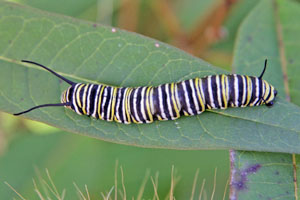
In temperate regions, pests are not common, but aphids will colonize the plants, leading to sooty mold (a fungus growing on the honeydew secreted by the insects) on the leaves. These pests can be washed off the plants with a forceful stream of water or can be controlled by repeated applications of insecticidal soap. Avoid using insecticides that kill caterpillars, however, so as not to endanger monarch caterpillars that often develop on the plants. Natural enemies, including lady beetles, green lacewings and syrphid flies, often keep aphid populations at reasonable levels, too.
A cultivar with yellow flowers, ‘Silky Gold’, is sometimes offered. Other named selections include ‘Silky Deep Red’ and ‘Red Butterfly’, with darker red flowers than the species, and ‘Apollo Orange’ and ‘Apollo Yellow’ with the appropriately colored flowers. Some have bronze foliage.
– Susan Mahr, University of Wisconsin – Madison
Ask Your Gardening Question
If you’re unable to find the information you need, please submit your gardening question here:





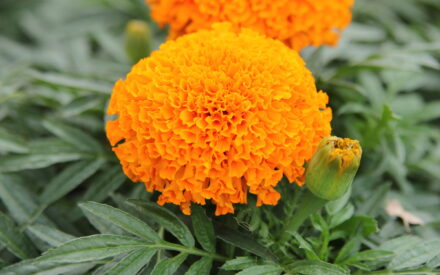 Marigolds
Marigolds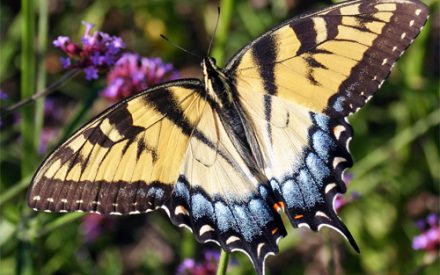 Create a Butterfly Garden
Create a Butterfly Garden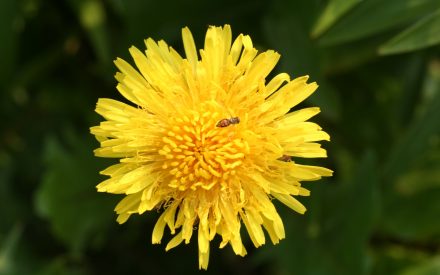 Plant Flowers to Encourage Beneficial Insects
Plant Flowers to Encourage Beneficial Insects Forcing Bulbs
Forcing Bulbs


